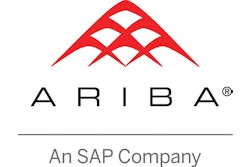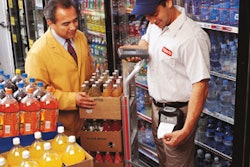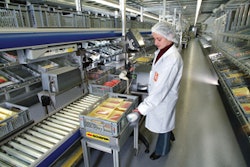Cambridge, UK — July 13, 2007 — The market for active RFID technology is growing faster than other radio frequency identification technology sectors and is responsible for an increasing percentage of the money spend in the RFID market, with logistics-related projects making up the largest number of active RFID projects to date, according to a new report from IDTechEx.
In its new research report, "Active RFID and Sensor Networks 2007-2017," IDTechEx notes that the term "active RFID" incorporates many technologies, including real-time locating systems (RLTS), ubiquitous sensor networks and active RFID with Zigbee, RuBee, Ultra Wide Band and WiFi.
In IDTechEx's analysis of 75 active RFID case studies from 18 countries, the largest number of projects has been in logistics, with around double the number for each of the nearest contenders: air industry, automotive/transportation and healthcare. Added to those as important sectors will be such things as safety of constructions and people monitoring. Meanwhile, RTLS is being put in about 50 hospitals yearly, for staff, patients and assets. In the case studies, the items that are tagged were mainly containers, followed by vehicles, conveyances and people.
Factors Driving Growth
Raghu Das, CEO of IDTechEx, summarizing results of the report, suggests that active RFID, where a battery drives the tag, will rise from 12.7 percent of the total RFID market this year to 26.3 percent in 2017, amounting to a $7.07 billion market. "If we include the market for cell phone RFID modules (another form of active RFID), the market is an additional $0.44 billion in 2007 and $1.2 billion in 2017," Das adds.
The primary factors creating this growth will be real-time locating systems (RTLS), and ubiquitous RFID sensor systems (mainly disposable), including so-called "smart active labels" (SALs), according to IDTechEx. Conventional active RFID, used where passive solutions are inadequate, and RFID modules for mobile phones will make up the rest.
Das says that the rapid growth of the active RFID market is being driven by such factors as:
"We have ended the decade of active RFID consisting of large tags in systems always generating their own radio waves usually in the 305-433 MHz range," said Das. "To the beginning of 2007, 614 million active RFID tags have been sold, with the vast majority used for car clickers (593 million). Like these, a large percentage of active RFID tags being sold in the future will replace nothing: they will perform new functions. The second biggest use for active RFID to date has been by the military, using 6.3 million active RFID tags so far."
In 2007, 63.9 percent of the spend on active RFID will be on the system (reader, network, installation, software) as opposed to the tags, IDTechEx reports. As the number of tags per application increases, this changes, so that by 2017 the spend on everything other than tags is 57.3 percent.
"Companies involved know that this is not like the highest volume uses of passive RFID tags, where disposable labels are usually involved and the label cost can be 50 percent of the total cost," Das says. "Most active RFID (such as RTLS) is more of a systems business."
Strong Investment
Recently, the investment community has taken greater interest in active RFID. Of 27 recent fund raisings by RFID companies studied by IDTechEx, 37 percent of the companies involved are in active RFID, while 22 percent are in the particularly popular RTLS sector. Recent acquisitions also favor active RFID companies. Indeed the largest exit, for hundreds of millions of dollars, was a company selling active RFID systems — Savi Technology sold to Lockheed Martin in 2006.
With over 100 companies now involved in some part of the active RFID value chain, and considerable government financing of research on low-cost active RFID, unit prices will strongly erode, creating a strong growth in numbers sold, IDTechEx predicts. The price erosion will be more rapid in some years as new technologies come into play, such as new microbatteries and printed logic.
Throughout the next ten years, RTLS will dominate the spend on tags, but this will consist of many small orders, Das says. Mobile phone/cell phone modules will see considerable price erosion as they are increasingly incorporated into the phone circuitry and volumes increase — already NTT DoCoMo has shipped over 29 million cellphones with RFID modules. "We see active RFID as intimately involved with many short range radio systems and interfaces, including passive RFID," Das says.
IDTechEx will host the Active RFID & RTLS Summit in Dallas on December 5-6.
In its new research report, "Active RFID and Sensor Networks 2007-2017," IDTechEx notes that the term "active RFID" incorporates many technologies, including real-time locating systems (RLTS), ubiquitous sensor networks and active RFID with Zigbee, RuBee, Ultra Wide Band and WiFi.
In IDTechEx's analysis of 75 active RFID case studies from 18 countries, the largest number of projects has been in logistics, with around double the number for each of the nearest contenders: air industry, automotive/transportation and healthcare. Added to those as important sectors will be such things as safety of constructions and people monitoring. Meanwhile, RTLS is being put in about 50 hospitals yearly, for staff, patients and assets. In the case studies, the items that are tagged were mainly containers, followed by vehicles, conveyances and people.
Factors Driving Growth
Raghu Das, CEO of IDTechEx, summarizing results of the report, suggests that active RFID, where a battery drives the tag, will rise from 12.7 percent of the total RFID market this year to 26.3 percent in 2017, amounting to a $7.07 billion market. "If we include the market for cell phone RFID modules (another form of active RFID), the market is an additional $0.44 billion in 2007 and $1.2 billion in 2017," Das adds.
The primary factors creating this growth will be real-time locating systems (RTLS), and ubiquitous RFID sensor systems (mainly disposable), including so-called "smart active labels" (SALs), according to IDTechEx. Conventional active RFID, used where passive solutions are inadequate, and RFID modules for mobile phones will make up the rest.
Das says that the rapid growth of the active RFID market is being driven by such factors as:
- Much stronger market demand for tracking, locating and monitoring people and things. This is driven by security, safety, cost and customer satisfaction, for example.
- Reduction in cost and size of the tags and systems.
- Development of ubiquitous sensor networks (USN), where large numbers of active RFID tags with sensors are radio networked in buildings, forests, rivers, hospitals and many other locations.
- Availability of open standards — notably ISO 18000-7, IEEE 802.15.4 and NFC.
- Leveraging many popular forms of short-range wireless communication, particularly WiFi, UWB and ZigBee and including mesh networks.
- Use of mobile phones for purchasing, mass transit, etc.
"We have ended the decade of active RFID consisting of large tags in systems always generating their own radio waves usually in the 305-433 MHz range," said Das. "To the beginning of 2007, 614 million active RFID tags have been sold, with the vast majority used for car clickers (593 million). Like these, a large percentage of active RFID tags being sold in the future will replace nothing: they will perform new functions. The second biggest use for active RFID to date has been by the military, using 6.3 million active RFID tags so far."
In 2007, 63.9 percent of the spend on active RFID will be on the system (reader, network, installation, software) as opposed to the tags, IDTechEx reports. As the number of tags per application increases, this changes, so that by 2017 the spend on everything other than tags is 57.3 percent.
"Companies involved know that this is not like the highest volume uses of passive RFID tags, where disposable labels are usually involved and the label cost can be 50 percent of the total cost," Das says. "Most active RFID (such as RTLS) is more of a systems business."
Strong Investment
Recently, the investment community has taken greater interest in active RFID. Of 27 recent fund raisings by RFID companies studied by IDTechEx, 37 percent of the companies involved are in active RFID, while 22 percent are in the particularly popular RTLS sector. Recent acquisitions also favor active RFID companies. Indeed the largest exit, for hundreds of millions of dollars, was a company selling active RFID systems — Savi Technology sold to Lockheed Martin in 2006.
With over 100 companies now involved in some part of the active RFID value chain, and considerable government financing of research on low-cost active RFID, unit prices will strongly erode, creating a strong growth in numbers sold, IDTechEx predicts. The price erosion will be more rapid in some years as new technologies come into play, such as new microbatteries and printed logic.
Throughout the next ten years, RTLS will dominate the spend on tags, but this will consist of many small orders, Das says. Mobile phone/cell phone modules will see considerable price erosion as they are increasingly incorporated into the phone circuitry and volumes increase — already NTT DoCoMo has shipped over 29 million cellphones with RFID modules. "We see active RFID as intimately involved with many short range radio systems and interfaces, including passive RFID," Das says.
IDTechEx will host the Active RFID & RTLS Summit in Dallas on December 5-6.







